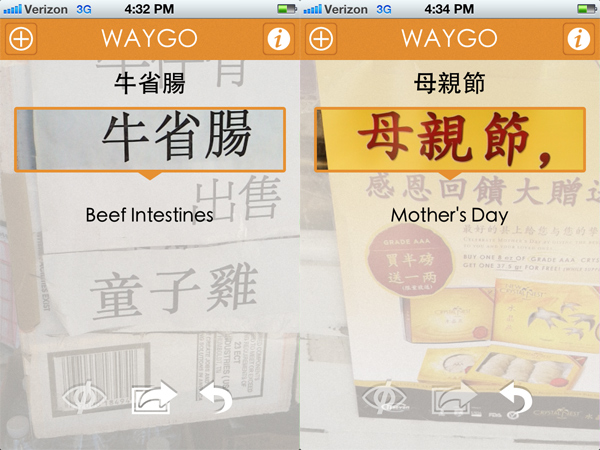Last Updated on June 17, 2013 by New-Startups Team
Every now and again an idea comes along, usually brought into existence by a startup, that really makes you sit back and go “wow.” Waygo has definitely created one of those ideas. Essentially, they’ve built an app where you can point a smartphone camera at Chinese characters, and have it appear on your phone in English. This isn’t science fiction – it is a real, working app.

In this TechCrunch comments thread, one user suggested that this technology has been in existence for quite some time, but as another responded, it’s also technology that has been applied to Spanish and English – two languages that share many more similarities with each other than Chinese and English. To be able to translate between languages with a completely different alphabet is an astonishing feat, and Waygo have pulled it off with aplomb.
Not only have they created impressive software, but they have also just won Most Promising Startup at the Echelon conference in Singapore. This is a notable achievement, given they had to beat a multitude of other startups in order to take the top prize. It’s no surprise, really – the app is far beyond the capability of most, and its ability to work without a data connection pushes it into the realm of software you can truly rely on.
Huan-Wu Yu, one of the startup’s co-founders, has been noted as stating that they should reach their $750k in seed funding soon. It would appear that the world is close to benefiting from Waygo, with users likely to appear in demographics anywhere from casual users with an O2 iPhone, to tourists, to business people commuting between nations.
Speaking of users, Waygo has almost 40,000 already. Given it’s a translation app and not an Angry Birds game, this is a significant number, and will no doubt grow over time, especially given that Waygo have cracked one of the most difficult language barriers and can then apply their skillset to creating an app that covers all languages, should they wish to do so.
They’re also confident in their own software. “Waygo in the Wild” demonstrates their ability to take the app straight into Chinatown in San Francisco, pick up a menu, look at a sign or contact page, and translate them immediately into fluent English. Admittedly you’d think there’s room for error, but it appears competent enough.
Away from the lens of the startup itself, it’s not clear how well the app performs, so more field trips made by users would be required to give a true impression of how well it works. If it does, it’s going to power through the app market. There’s no reason for most metropolitan citizens across the world not to make use of this app – Mandarin is a language you’ll find in many places, and being able to whip out your phone and not have to worry about a language barrier that’s a lot trickier than the one between Spain and England is pretty fantastic.